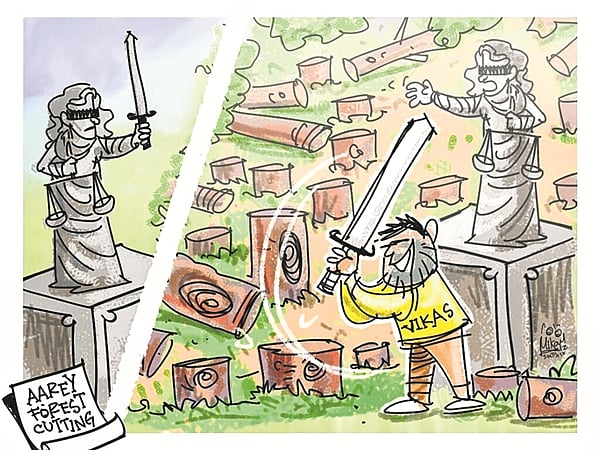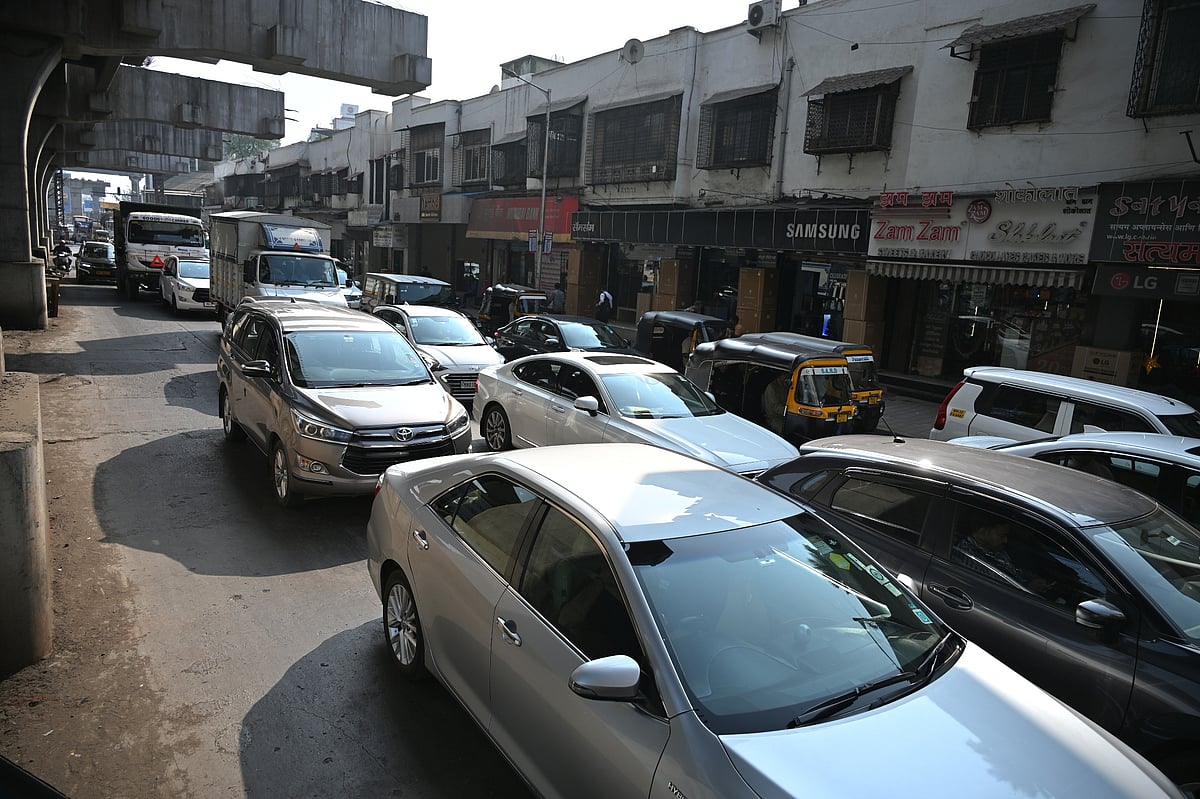In the Western suburbs of Mumbai, a new story of resistance is being written as youngsters motivated by nothing more than the idea of saving trees and protecting an area known as the green lungs of the city have organised themselves to stand against the might of the State.
Last weekend, as the authorities began felling trees, swarms of riot police descended in the wooded enclave that is known as Aarey Milk Colony and clashed with thousands of youth protestors.
Many of them were arrested and put away in various jails under judicial custody. The trees, under the threat of the electric saw for five years, finally began to fall. The total felling will cross 2,000 trees to clear up space for a shed for the upcoming metro lines that will signify more development, speedier travel and modernistic transport for the 25 million people of Mumbai.
The development brigade argues that this is what is needed in gridlocked Mumbai, India’s financial centre, home to the highest income tax collections and the showpiece city that is teeming with slums, but also with opportunity and optimism. This is what Gillian Tindall famously called the “city of gold” in her book of the same name. This is the city where the penniless came to become millionaires.
And this is also the city where trade unions made a mark against development by smashing light bulbs in the mills when electricity first arrived on the shop floor (between 1905 and 1908).
They argued that artificial light was a tool of exploitation because workers were made to work 15 hours as a result. The result was the Factories Act enacted in 1911 that limited working to 12 hours in textile factories. This is also the city that saw the birth of the Congress party in 1885 and the launch of the Quit India movement in 1942 (both at the same venue that is now called August Kranti Maidan) that led to freedom in 1947.
But the idea of resistance, notably in post-lliberalisation India, has almost died out in the city; the language of justice, fairness and rights is less heard while economic growth, stock market prices and the glamourous life are more likely the topics of discussion.
It is this that the modern-day corporations turn to, to power their consumption-led growth story – the youth that they say seek instant gratification, fast food and ready-made solutions.
Two-minute noodles, digital wallets and the host of food delivery solutions are testimony to the swing in the trajectory of demand as India (and Mumbai as a microcosm of India) prepare to grow faster.
Except that this idea of development is now under some serious strain. The protestors at Aarey tell us a story of a new generation that is unwilling to be codified by the rules that allow the State, the corporations and the establishment in general to exploit resources, push consumption and sell a model under which the largest, greenest, among the oldest and the most majestic part of Mumbai is felled in one night so that metro-rail cars can come there for a night halt.
What is more, among the protestors at Aarey are students, lawyers, journalists, film makers, photographers, tribals, homemakers, writers, and a host of other professionals.
For five long years, they have organised, protested, signed petitions, moved courts, organised walks in the woods and educated millions through the media on the perils of trampling on forest land (even if it is not formally declared a forest by the government) that is the most pristine areas of Mumbai city.
So green and inviting is the place that it has a picnic spot that is called “chhota Kashmir”. The Gazetteer of India for the Greater Mumbai District (Volume I – Second Revised Edition of 1986) calls the area a “protected green”.
It is not that parts of this protected green have not been violated in the past. It has a road cutting through it; a builder magically got permission long years ago to build a golf course and some villas but the project never took off in the way it was intended. But protests in the past were few and far in between.
This time is clearly different, in terms of the age and profile of the protestors, the randomness with which they have worked to pull off a long-term protest and the sheer energy they have brought to the cause of saving a patch of green.
Across the world, it is the new generation that is asking questions on models of development that have brought us the threat of climate change, rising inequality and a growing array of lifestyle diseases.
The much-publicised protest of the 16-year-old Greta Thunberg or the lesser known protest of of the young and old alike at Mumbai’s green lungs of Aarey speak the same language, ask the same questions and reject the Anthropocentric view of development that is the only language that many governments tend to speak. In the Indian context, this is not about the BJP or the Congress – both ride in the same boat when it comes to the idea of what is growth and how it is to be achieved.
It is possible to argue that this is but one small patch of land in a city that is full of concrete. It is equally true that the trees have begun falling and probably the metro shed will be built. In that sense, it is possible to ask if the protestors achieved anything other than creating noise, raising awarness and then conceding defeat.
The fact is that petitions in the Bombay High Court against the government and asking for the felling to be put off were dismissed. (There are cases still pending in the Supreme Court). Yet, the story of the protest at Aarey is not the story of a win or a loss in the immediate.
It sends out a signal that in a city that is known only by its financial metrics, there is the rise of a new set of voices who do not accept the dominant view, who measure the value of the city and its people beyond the numbers seen on the Sensex or the Nifty and who are asking questions that have rarely been asked in recent years.
This marks a shift and businesses and the governments would be well advised to heed. In that sense, this is an important step in the change that is probably coming, little different in significance from the smashing of the light bulbs in the mill factories more than 100 years ago.
This movement can only get strengthened over time, particularly as some of the ills of unbridled development in terms of collapsing banks, declining stocks and slowing GDP numbers become more apparent and tell us that the story of growth that was sold all along was never as good as it has been made to sound.
(Jagdish Rattanani is a journalist and a faculty member at SPJIMR. Views are personal) (Syndicate: The Billion Press), (e-mail: editor@thebillionpress.org)









